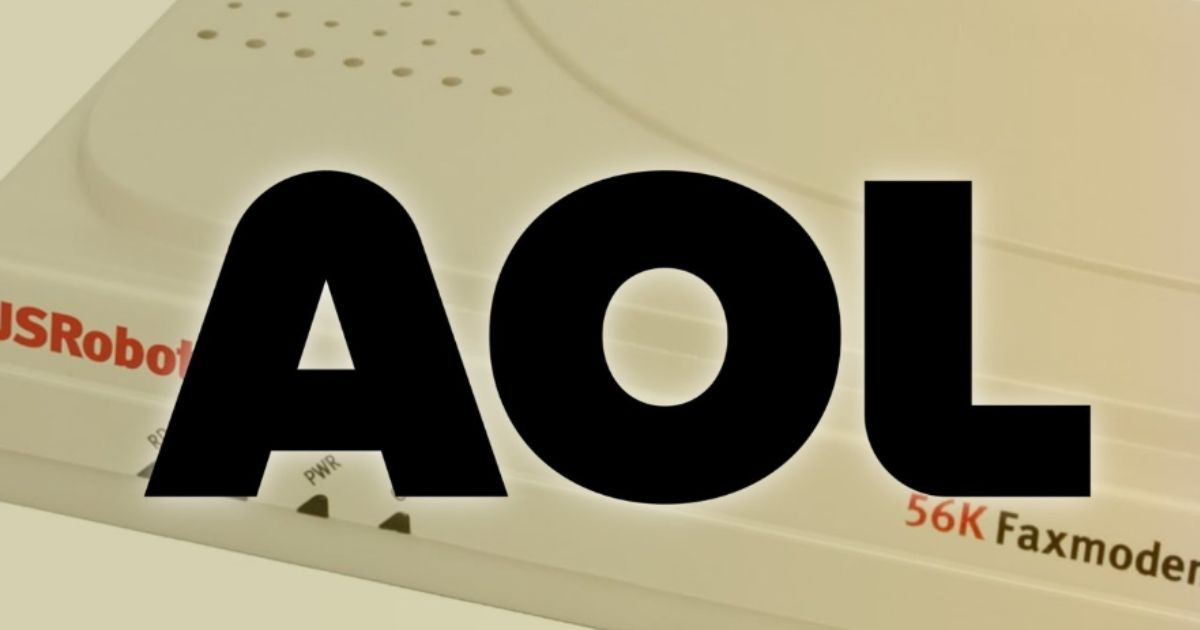AOL dial up is officially coming to an end. After 34 years—dating back to the dawn of widespread internet use—AOL has announced that it will discontinue its dial-up service, including the AOL Dialer and Shield browser, on September 30, 2025. This marks not just a technological shift, but the closing of a chapter that shaped how generations first connected to the web.
A Legacy That Connected Millions
AOL dial-up, which launched in the early 1990s, became synonymous with early internet access. Tens of millions of people worldwide used it during its peak, and it introduced countless first-time users to email, chat rooms, and the wider web. The service was famous for the screeching modem startup and the cheerful “You’ve got mail!” greeting that embedded itself in pop culture.
The Shutdown Announcement
This August, AOL quietly posted a notice stating, “AOL routinely evaluates its products and services and has decided to discontinue Dial-up Internet. This service will no longer be available in AOL plans.” The shutdown will take effect on September 30, 2025, and will include the retirement of the AOL Dialer and Shield software, which were tailored for slower dial-up connections.
Several outlets confirmed the announcement, calling it the end of a defining era in internet history.
How Many People It Still Served
While dial-up’s relevance has waned, it remained a lifeline for people in areas lacking broadband access. As of 2023, approximately 250,000 to 275,000 U.S. households still relied on dial-up as their primary internet connection. That represents less than 1% of national internet users. For those users, AOL’s announcement signals a pressing need to transition to new connectivity solutions.
Why It’s Ending Now
The primary driver is simple: dial-up no longer makes economic or technical sense in most markets. Broadband—via cable, DSL, fiber, or satellite—provides vastly superior speeds and reliability. Maintaining the infrastructure and software for a dying technology isn’t sustainable, especially when usage numbers are so small. AOL’s decision reflects both practical considerations and a broader push for modern connectivity.
The Cultural Echoes of Dial-Up
For many of us, the AOL dial-up experience was more than just slow speeds—it was a rite of passage. Memories include checking email after school, spending hours in chat rooms, and the codified delight of that dial-tone greeting. Movies like *You’ve Got Mail* immortalized the soundscape of early internet life. Its shutdown signals not just technological progress but the fading of a formative cultural era.
What’s Happening to Remaining Users?
For those still using AOL dial-up, the options vary. Some can transition to broadband via government-supported initiatives like the Affordable Connectivity Program or local broadband expansion efforts. Others may look to satellite or wireless alternatives. However, for isolated or low-income users, change can be complex—physically, financially, and emotionally. The shutdown is a reminder that infrastructure gaps remain in parts of the country.
Transitioning from Dial-Up
Here’s what users need to know:
- Backup your data: Download emails, contact lists, and archives before the service ends.
- Choose a replacement: Options include cable, fiber, DSL, or satellite. Explore available providers in your area.
- Seek assistance: Programs funded by the government and local nonprofits can help with access and cost.
Though nostalgic, holding onto dial-up now means risking disconnection entirely after September.
External Insight
For a compelling breakdown of the shutdown and its cultural meaning, check out Salon’s coverage, titled “Goodbye to Dial-Up: AOL closes a chapter in web history.”
(Salon noted how the soothing—or anxiety-inducing—sound of a modem connected internet with a tangible human experience.)
The Final Connection: A Nostalgic Goodbye
Walking into this shutdown season, we might feel a tinge of nostalgia—every screech, “You’ve got mail,” and late-night chat room sign-in evokes a time when the internet felt magical. But networks evolve. Dial-up’s final bow is a reminder of how far we’ve come—from dial tones to gigabit speeds, from fragmented online spaces to an always-on web. The modem sound may go silent after September 30, but its legacy will echo in every new tab we open.

